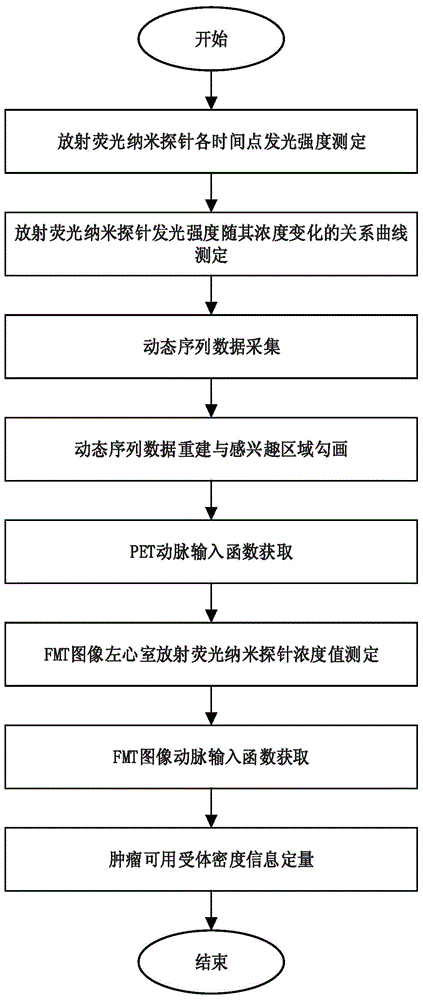Fluorescence three-dimensional imaging tumor available receptor density quantitative method based on PET guide irradiation
A radiofluorescence and three-dimensional imaging technology, applied in the field of medical imaging, can solve the problems of complex experimental operation, quantification, different emission bands, etc., to simplify complexity, ensure accuracy, and reduce radioactive pollution.
- Summary
- Abstract
- Description
- Claims
- Application Information
AI Technical Summary
Problems solved by technology
Method used
Image
Examples
Embodiment Construction
[0062] The present invention will be further described below in conjunction with the accompanying drawings. It should be noted that this embodiment is based on the technical solution, and provides detailed implementation and specific operation process, but the protection scope of the present invention is not limited to the present invention. Example.
[0063] Such as figure 1 As shown, the method for quantifying available receptor density in tumors based on PET-guided radiofluorescence three-dimensional imaging includes the following steps:
[0064] (1) Measurement of Luminescence Intensity of Radiofluorescent Nanoprobes at Each Time Point
[0065] From 0nmol to 3nmol as the upper limit, 31 radiofluorescence nanoprobes Gd2O2S:Tb-GX1 concentration gradients were set at 0.1nmol concentration intervals, and they were uniformly mixed with 100uci of PET probe 18F-FDG and placed in the optical imaging chamber immediately. Continuous observation, according to the dynamic time frame...
PUM
 Login to View More
Login to View More Abstract
Description
Claims
Application Information
 Login to View More
Login to View More - R&D
- Intellectual Property
- Life Sciences
- Materials
- Tech Scout
- Unparalleled Data Quality
- Higher Quality Content
- 60% Fewer Hallucinations
Browse by: Latest US Patents, China's latest patents, Technical Efficacy Thesaurus, Application Domain, Technology Topic, Popular Technical Reports.
© 2025 PatSnap. All rights reserved.Legal|Privacy policy|Modern Slavery Act Transparency Statement|Sitemap|About US| Contact US: help@patsnap.com



